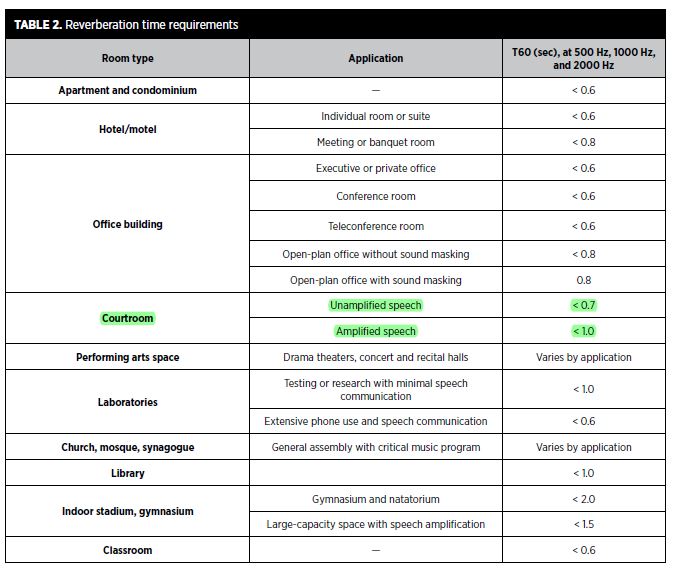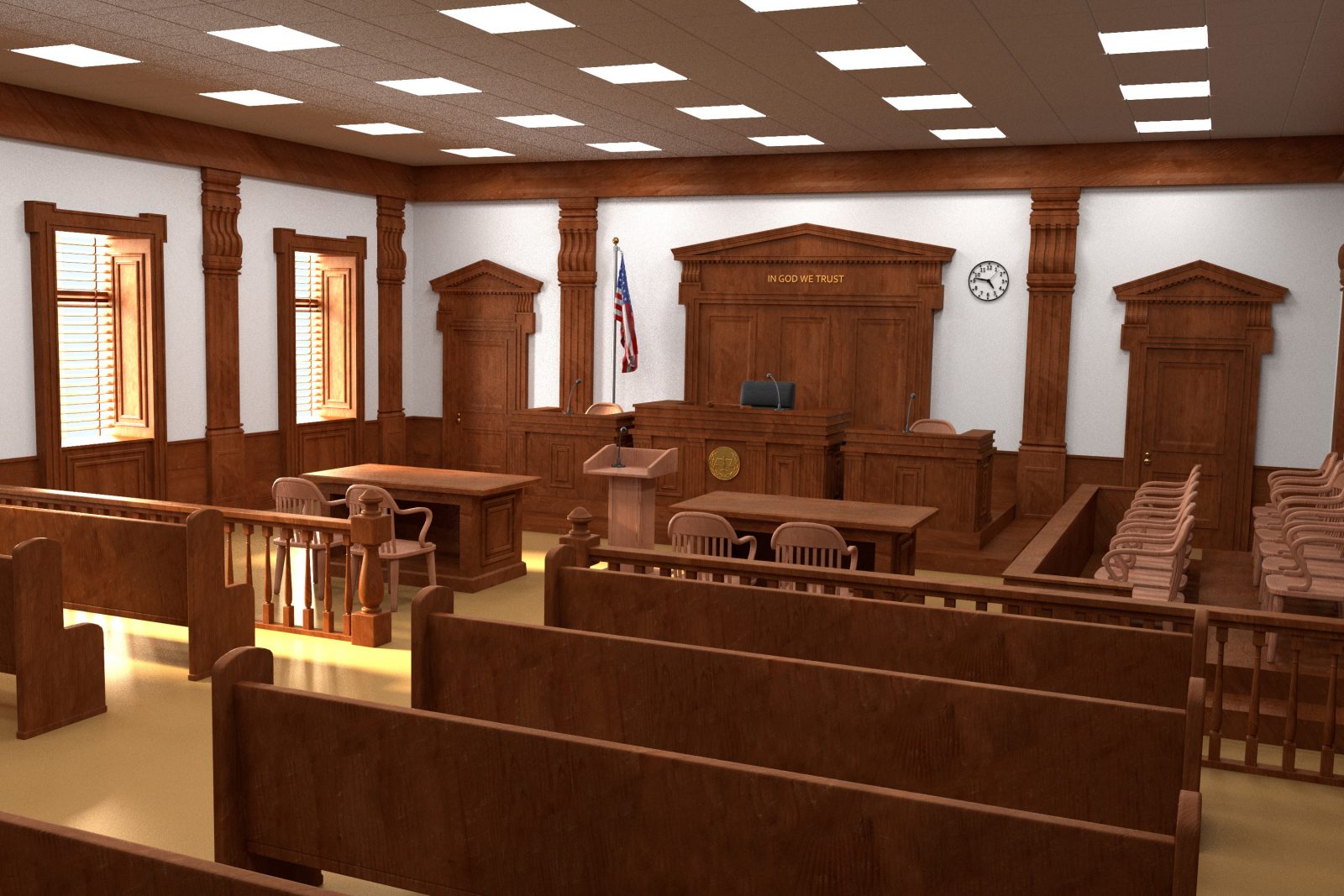Courtrooms are critical civic locations that allow our society to operate. Courtrooms rely on communication, and without it, court cases and proceedings may not run smoothly or effectively. By knowing when and how to apply various acoustic treatments to courthouses, you can allow clear and comfortable speech and promote stronger communication.
It’s important to have the proper acoustical treatments in a courtroom because you need to be able listen to and understand what people are saying in court. It’s especially important for the jury because on many cases, they’ll be the ones making a guilty or non-guilty verdict based on the information they hear. For anyone who has been in a courtroom you know they’re often filled with hard surfaces and some of them are oddly shaped with high ceilings.
The unique requirements, including amplified speech, speech privacy, and large acoustic areas, in a courtroom can lead to a variety of noise issues.
Unique Courthouse Acoustics Requirements – Courtroom Echo & Judicial Speech Privacy
- Amplified Speech so that jury, audience, and legal teams can clearly hear can lead to Cross-Talk and Sound Transmission into adjacent courtrooms
- Large volume and reflective surface areas to accommodate large audiences, lead to reverberation
- Sidebars require occasional speech privacy (often in terms of Sound Masking)

Geometric Constraints
Depending on the courtroom, they are filled with hard surfaces, are large and have high ceilings. Hard surfaces and irregularly shaped spaces cause a lot of reverberation and echo within spaces and that’s not something you want in a courtroom. Also, if the judge is using a microphone this may cause additional echo.
Keep Courtroom Aesthetics with Custom-Designed Acoustic Panels
Courtrooms have a classic look and are usually furnished with wooden furniture, wood paneling, and don’t have any carpet. This look is for both aesthetic reasons as well as functional reasons. With all of the people entering and leaving courtrooms every day, hard surfaces are just so much easier to keep clean and looking nice compared to having carpet that gets dirty easily and is hard to clean.
Two Primary Issues:
- Reverb: Without any absorptive surfaces in courtrooms, there’s a lot of echo and reverberation. You don’t necessarily want to eliminate all echo or reverberation because you don’t want to be in a “dead space”.
- Incoming Sound: In courthouse, there will usually be courtrooms with walls adjacent to each other. If you have judges and lawyers using speech amplification devices then that sound can travel through the wall joining the rooms. Another source of incoming sound for courtrooms is noise coming in through the entrance door. People are usually waiting outside of courtrooms and having conversations that can make their way in.

Suggested Acoustic Treatments in Courtrooms
At Commercial Acoustics we use ABC2 to determine a space’s acoustical needs. This stands for Absorption, Blocking, Cover and Consulting.
In a courthouse you will need some sound absorption to mitigate the excess echo and reverberation. This may come in the form of sound absorbing panels, acoustic ceiling clouds, and other similar acoustic treatment options. Any absorption products should be lab-tested for NRC values above 0.8, and ideally at 1.0. Sufficient absorption must be designed into the space, dependent on room size and finishes.
Use Acoustic Calculator to Determine Necessary Acoustic Treatment Area
In order to block courtroom noises from transferring between adjacent courtrooms, the adjacent wall should have an STC rating of 60. If the existing wall has a lower STC rating than 60, it can be treated with the use of a wall membrane. Wall Blokker PRO can be installed behind a finished wall during construction or placed between and existing wall and a new layer of drywall.
In some cases, speech privacy is a requirement in courtrooms when counsel approaches the bench to speak with the judge. This is where the covering part of ABC2 come into play. In order to keep these conversations private, sound masking can be used. White noise is very effective in this situation to ensure that the judge and counselors can hear each other, while the spectators only hear the white noise. Over the past several years, numerous courthouses have implemented sound masking systems into their courtrooms, which may be turned on as counsel approaches the bench, ensuring that jurors and others in the courtroom cannot hear the conversation.
When To Acoustically Treat a Courtroom
The unique requirements of courtrooms tend to make them a prime example of a space that needs acoustic treatment. As mentioned above, treatment comes in many forms for courtrooms including the use of acoustics panels, wall membranes and white noise machines.
If you’re interested in an acoustic consultation for your space, don’t hesitate to contact us here at Commercial Acoustics. We’ll let you know if your space needs acoustic treatment and what methods would be most appropriate.

